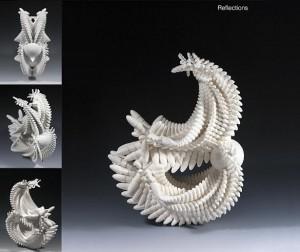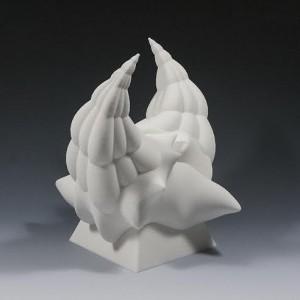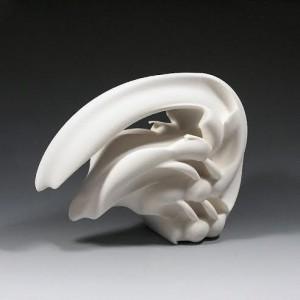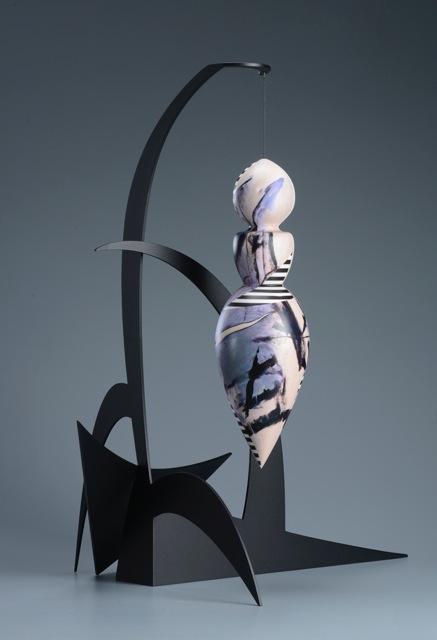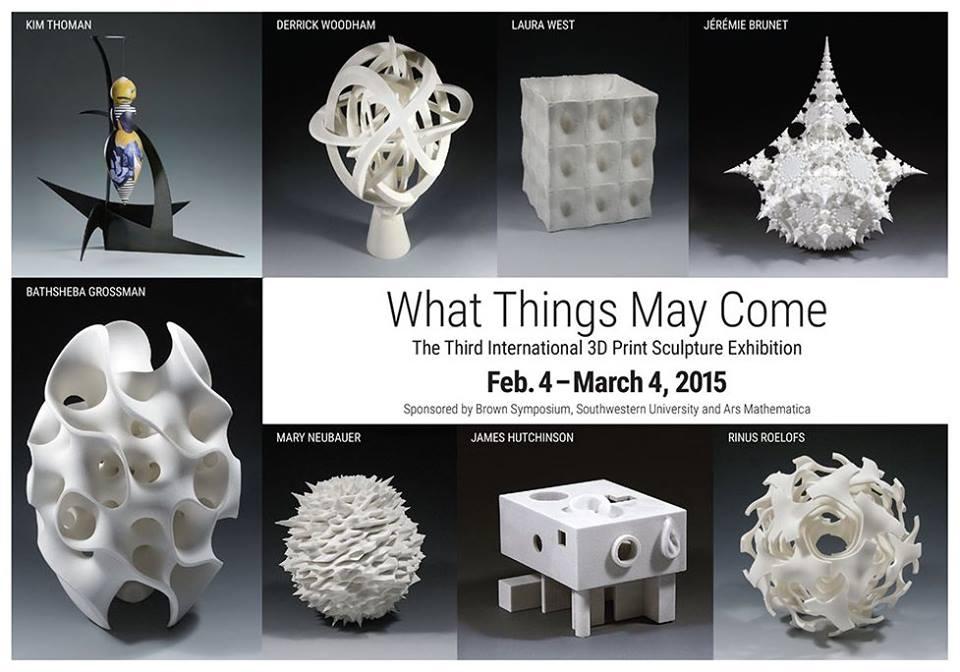What Things May Come: 3D Printing is the Topic of Southwestern University Symposium/Sculpture Exhibit
 As 3D printing’s availability grows it also captures more attention from researchers who weigh the pros and cons of the profound shifts that the technology can have in science, medicine, manufacturing, the arts — and beyond. Southwestern University Professor of Art Mary Hale Visser has been interested in 3D printing for a while, and she has organized a 3D printing educational symposium and art exhibit (with an international twist) on her Georgetown, Texas campus beginning February 4.
As 3D printing’s availability grows it also captures more attention from researchers who weigh the pros and cons of the profound shifts that the technology can have in science, medicine, manufacturing, the arts — and beyond. Southwestern University Professor of Art Mary Hale Visser has been interested in 3D printing for a while, and she has organized a 3D printing educational symposium and art exhibit (with an international twist) on her Georgetown, Texas campus beginning February 4.
As she explains to 3DPrint.com:
“I wanted the topic to focus on the impact of 3D technology on the human mind as it endeavors to meet future challenges in the arts and sciences. Most of the publicity surrounding the invention of 3D printing has been focused on the rather mundane objects like small replicas of toys that anyone can now make with the aid of a personal 3D printer. What has not been discussed is how this technology will change the way in which human beings think creatively and its impact on various fields of knowledge.”
The timing of this symposium/exhibit coincides with the campus’ celebration of its 175th anniversary — beginning February 5, 2015. The University has hosted the Brown Symposium for 36 years. As a Brown Scholar since 2012, Visser’s research is supported by the University and this year’s 37th Brown Symposium is the culmination of her research. The Symposium is an academic event — a mini conference of sorts — that has recently addressed topics as diverse as “cosmology, punctuated evolution, macro-history, the human genome project, spiritualities of resistance, arctic ecology, and the intersection of science and religion.” Previous speakers have included Winona LaDuke, Isaac Asimov, bell hooks, Stephen J. Gould, Diane Ackerman, and Alex Haley.
As busy as Profesor Visser has been lately, she took time out to answer some questions about 3D printing and “The Third International Digital Sculpture Arts Exhibition: What Things May Come” 3D Printed Art Exhibit (co-curated with Christian Lavigne) beginning on February 4th, which is part of the Brown Symposium featuring scheduled speakers all day on February 26 and February 27, 2015. Speakers were chosen based on Visser’s sense of the scholarly demands of this complex topic.
She states:
“3D printing is different from other forms of knowledge in that its impact has occurred across many disciplines. The speakers I selected for this symposium research the use of 3D print technology in the Fine Arts and Sciences. This medium has the potential to solve major issues in our lives, from building environmentally friendly homes and products, exploring other planets, replacing living body parts to creating unique sculptural forms… [The speakers] ask how will 3D printing not only impact our lives, but also open up our minds.”
Visser chose Symposium speakers based on this question: “What are the changes in creative thinking that 3D printing holds for sculptors, scientists, and musicians and how will these changes in creative thinking influence the use and development of 3D printing for the 21st century?” She came up with an impressive list of participants, whose work bridges art, medicine, science, and industry, and who come from different perspectives regarding 3D printing’s applications and potential. She invited artists whose work embodies 3D printing’s creative potential:
“In sculpture, I chose Bruce Beasley who…is a world-renowned monumental modernist sculptor with work that has been collected by over 35 museums worldwide. He has produced computer assisted sculptures with fine art legitimacy few dare question. I chose artist Robert Michael Smith as he is involved in stretching the limits of what sculpture can be by using his own body’s cells to bio-print living sculptures. In music I have asked Dr. Olaf Diegel of Lund University in Sweden to speak because he is internationally known for taking on challenges and printing impossible ‘things’ from health care to musical instruments. I chose Christian Lavigne, Director and President of Ars Mathematica from France; he will speak about what digital sculpture is and its history in the field of Art.”
While Visser’s own introduction to 3D printing is through art, she made sure to represent its other applications in medicine and industry, for example, by inviting Symposium speakers who can address these areas:
“Dr. Anthony Atala will speak on ‘Regenerative Medicine: Current Concepts and Changing Trends’ in the field. Dr. Atala is the Director of Wake Forrest Regenerative Medicine Institute and has been bio-printing body parts from the cells of children who need organ transplants. I also wanted to show what made 3D printing possible for the general public and I asked Lisa Crump who co-founded Stratsys Inc. to speak about the invention of the Fused Deposition Modeling process.”
Visser has also organized a Creative Minds panel for the Symposium schedule that includes artists James Hutchinson from England; Mary Neubauer from Arizona State University; Andrew Werby from California; and Alvin Sher from New York. They will all address how 3D printing has changed their way of thinking about art. Visser explains that the Symposium will get artists talking, but they will also be showing their work:
“The Third International Digital Sculpture Exhibition: What Things May Come is part of the symposium and will be held in the Fine Arts Gallery in the Sarofim School of Fine Arts at Southwestern University. I co-curated this exhibit with Mr. Christian Lavigne of Ars Mathematica — a non-profit organization that promotes digital sculpture on the international level. The artists in this exhibition are the pioneers in using 3D printing for making their artwork.”
Visser summarizes the exhibited artists as “creating new forms in sculpture that expand the possibilities that 3D printing applications.” The entire list of artists is here, and Visser describes the cross-disciplinary exhibit and some of the artwork for 3DPrint.com:
“This exhibition is in collaboration with Ars Mathematica because this organization started symposia and the biennial exhibit INTERSCULPT that crossed disciplines… In my own work, I use mathematical formulas that represent data streams of light to create a visual form in the sculpture titled ‘Reflections.’ Robert Michael Smith explores the rhythms of growth and harmony within a form, and Paul Highman seeks out the visual form of brain waves as he predicts its path from data. Corinne Whitaker takes on whimsy and narratives that seem to float in time and space. Kim Thoman uses the 3D printer to explore the dynamic of dualities, such as nature and culture, the mechanical and organic. Mary Neubauer uses data streams to create visual representations of the data. Each artist uses digital methods to create forms that were impossible to construct prior to the development of the 3D printer.”
Southwestern University’s Brown Symposium makes February an active month for 3D printing devotees and those seeking to learn more about the technology and its myriad applications. That is exactly what Visser intends to do; she wants to create a space where people can reflect on the technology’s potential impact:
“As with all new inventions there will always be concerns based upon what people choose to do with it. It makes the production of ‘things’ easier and with less restrictions. Whether 3D printing is a useful medium or not will depend entirely upon the user and his or her purposes. I think its most important gift to us is that it allows us to exercise our creativity and its up to use it to reshape our world for the better.”
You can read all about this year’s 3D printing-themed Brown Symposium/Exhibit — “What Things May Come” — here. Is this an event you might attend? Let us know what you think about these multi-disciplinary artists’ work, and the symposium itself, in the What Things May Come 3D Printing Symposium forum thread over at 3DPB.com.
Subscribe to Our Email Newsletter
Stay up-to-date on all the latest news from the 3D printing industry and receive information and offers from third party vendors.
You May Also Like
3D Printing Unpeeled: New Arkema Material for HP, Saddle and Macro MEMS
A new Arkema material for MJF is said to reduce costs per part by up to 25% and have an 85% reusability ratio. HP 3D HR PA 12 S has been...
3D Printing News Briefs, January 20, 2024: FDM, LPBF, Underwater 3D Printer, Racing, & More
We’re starting off with a process certification in today’s 3D Printing News Briefs, and then moving on to research about solute trapping, laser powder bed fusion, and then moving on...
3D Printing Webinar and Event Roundup: December 3, 2023
We’ve got plenty of events and webinars coming up for you this week! Quickparts is having a Manufacturing Roadshow, America Makes is holding a Member Town Hall, Stratafest makes two...
Formnext 2023 Day Three: Slam Dunk
I’m high—high on trade show. I’ve met numerous new faces and reconnected with old friends, creating an absolutely wonderful atmosphere. The excitement is palpable over several emerging developments. The high...


